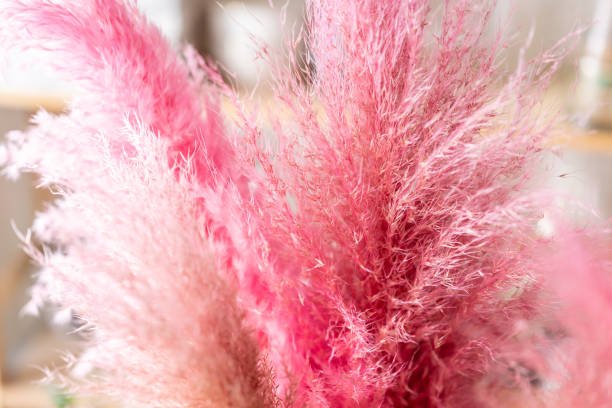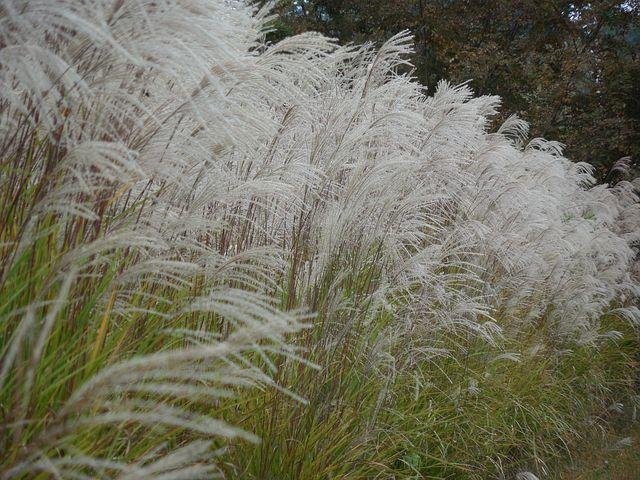Pampas Grass, the common name for (Cortederia Jubata and C. Selloana) is a giant clump-forming perennial grass with saw-toothed leaves and white to pink flowers. It is a flowering Plant and ornamental grass native to Argentina, Brazil, and other regions of South America and is cultivated worldwide.
The Pampas Grass is an erect perennial tussock forming grass up to three meters tall with narrow, deep green attenuate leaves with serrated margins. It also has green or yellow saw-toothed leaf blades with razor-sharp edges that form tufted clumps called tussocks. The Pampas Grass is a member of the Poaceae family related to bamboo, rice, and wheat.
How To Grow Pampas Grass From Seed Indoor
The easiest way to grow Pampas Grass is to buy it as a small plant ready to put in the ground. As a perennial plant, Pampas Grass grows during the winter month, and new growth occurs in the early spring. Planting at the appropriate time in your geographical area is essential if you want to have tall 10-foot plumes by late summer.
Although Pampas Grass is listed as invasive in Australia, New Zealand, and throughout the West Coast region of the United States, it is advisable to find out if the plant is listed as invasive in your area before planting.
Here is a step-by-step guide to planting Pampas Grass from seed indoor
1 . Get A Planting Pot
Place a potting mix in a planting pot. Check if the pot has good drainage openings. If it doesn’t, go ahead and drill a few holes in the base of the container to enable excess water to flow out.
2 . Plant The Seeds
Scatter the seeds on the surface and do not cover the soil.
3 . Cover The Container With A Clear Plastic Some
After watering the seeds, seal the container with a plastic dome. This will help maintain the moisture and prevent moisture loss.
4 . Place The Planter In A Sunny Area
Pampas Grass needs direct sunlight to thrive, so put the container in a bright spot to receive six to eight hours of sunlight.
5 . Mist The Soil Daily
Mist the soil daily to keep up with the moisture needed by seeds to germinate. Leaving the soil dry won’t supply sufficient nutrients and water to the soil, while leaving the soil too wet can lead to the rotting of the seeds.
6. Transplant The Seeds Outdoor
Once the seeds grow 3 to 4 inches tall, relocate the grass and place it in the holes with width and depth that are the size of the root structure. Also, water the grass immediately after transplanting.
How To Grow Pampas Grass From Seed Outdoor
1 . Choose A Site
Though Pampas Grass requires a lot of sunlight to grow, select a spot that gets a minimum of six hours of direct sunlight to grow. Pampas Grass can also grow in partial shade, but the plants may be less healthy.
Make sure there is plenty of room between your new plants and your neighbor’s garden. Be careful not to plant the grass next to a flame source because it may cause a fire hazard.
2 . Prepare The Soil
Pampas Grass thrives in rich, moist, and well-drained soil. Add a well-balanced fertilizer to mulch your garden to assist drainage.
3 . Plant The Seeds
Place the seeds directly at the soil’s surface and leave it open because they need light to grow. Loosen the ground surface to prevent the air from blowing the seeds away and put a net above the soil to prevent the birds from eating the seeds.
4 . Water Very Lightly
Water the seeds Lightly until they begin to grow. Once the seeds begin to grow, the plant will require watering every few weeks during the first years. Ensure you avoid forceful water spray as it can wash the seeds away.
How To Care For Pampas Grass
1 . Water Moderately In The Primary Years
Watering the Pampas Grass is essential in the first few years to develop a healthy root system. Not that the amount of water depends on the size of the plant, location, and time of the year. However, watering is unnecessary if the plants become well established.
2. Fertilize Four Times A Year
For abundant growth, feed the Pampas Grass a balanced fertilizer four times a year.
3 . Prune
Pampas Grass proliferates, and to keep it under control, prune the grass stalk to the ground with a trimmer to encourage new growth. Avoid pruning the Pampas Grass in the winter, and remember to use your protective gear when pruning this grass.
4 . Divide The Clumps
After pruning, separate clumps of the Pampas Grass before new sprouts occur.
5 . Protect The Roots From Damage
To protect the roots from freezing temperature, which can kill them, put some layer of mulch or straw over the roots.
6. Watch Out For Pests And Diseases
This is one of the most important ways to care for your Pampas Grass. Take out time to inspect the Pampas Grass regularly. If by chance you find any spots, spray a fungicide and always check the grass for any unwanted organisms that might live in its large foliage.
What Are The Different Types Of Pampas Grass You Can Grow?
Pampas Grass is often referred to as the king of ornamental grass. It is an attractive ornamental grass with flowering plumes in several colors at the end of slender green stems.
The Pampas Grass can grow in full sun or partial shade, and its flowers range in color from white to pink and bloom in the fall. Also, because of its height, Pampas Grass can be used as a windbreak, accent plant or a screening in a border, or extensive planting.
1 . Gold Band Pampas

Gold Band Pampas is a slow-growing compact evergreen plant characterized by golden or yellow strands on its leaf blades. It is tolerant to cold and hot temperatures, and it’s best planted in containers. Gold Band Pampas produces flowers ranging from golden tan to white.
2 . Andes Silver Pampas

Andes Silver Pampas is very similar to Gold Band Pampas. It is characterized by silvery-white flower heads that appear in fall.
However, the only significant difference it has with the Gold Band Pampas is that it features white strips that can be found in its leaves. It is also topped with a feathery panicle of blooming flowers that are white that offers a silver sheen.
3. Pumila Pampas

Pumila Pampas is also called dwarf Pampas. It grows 3-6 feet in height and features creamy ivory plumes that are two feet in length and gray-green leaves that are up to three feet wide.
4. Sundale Silver Pampas

Sundale Silver flowers grow as tall as 10 feet in height. It is known for its silvery-white flower head that can tolerate mild to moderate rainfall. It is advisable to place this plant several feet apart to reduce invasive spreading because it will help your growing process.
5. Pink Pampas

Pink Pampas has attractive feathery flowers, and it is distinctive for its pink hue. It grows to 8 feet with its tightly-clumped bloom that appears around mid-summer and stays till autumn.
6. Silver Fountain Pampas

Silver fountain Pampas is a white Pampas grass equipped with densely packed leaves that are long and green in color. Its leaves are similar to the silver stripe, and it blooms in late summer.
7. Splendid Star Pampas

Splendid Star is distinctive for its Hardy nature and bright golden-striped leaves suitable for growing in containers. Its small white flower heads are suitable for fried flowers as well.
8. Monvin/Sun Stripe Pampas

The Sun Stripe Pampas is commonly known as being an excellent plant with stripes along with its leaf blades. It can grow up to 6-7 feet, and its silvery-white flowers appear in the sun.
9. White Pampas Grass

Also known as Silver Comet, White Pampas Grass is commonly known for its Beautiful leaves rather than the flowers that bloom from this cultivar. Its leaves feature white striations located on its edges, making it look not very interesting in comparison.
Frequently Asked Questions
1 . Where Does Pampas Grass Grow Best?
Pampas Grass grows best in full sun. Though it can tolerate partial shade, for the best bloom yield result, it needs direct sunlight.
2 . What Can Pampas Grass Be Used For?
Pampas Grass can be used for a wide range of Purposes. It can be used for wreath making, wedding arches, altars, hanging constructions, etc.
3 . How Long Do Pampas Grass Last?
Pampas Grass can last up to 3 years with enough care needed.
4 . Does Pampas Grass Shed?
Pampas Grass for shed when you shake them or move about with them.
5. How Do I Stop My Pampas Grass From Shedding?
You can reduce the shedding by spraying the plumes lightly with hairspray once they have fluffed up. Please keep away from direct sunlight and moisture to prolong it.
